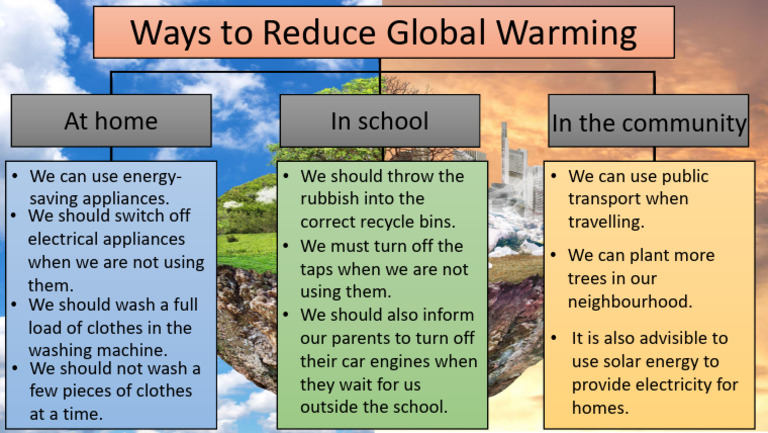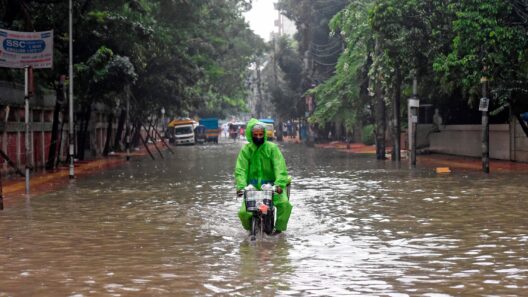Imagine waking up one day to a world where air pollution is a thing of the past and climate change is no longer an impending catastrophe. Sounds idyllic, right? However, this utopian vision cannot materialize without our collective effort. So, how can we rise to the occasion and thwart the grim realities of global warming? Community action is fundamental, and today, let’s delve into practical strategies that each of us can embrace.
Firstly, understanding the root causes of global warming is crucial. The primary contributors are greenhouse gas emissions, deforestation, and industrial waste. These factors not only elevate the Earth’s temperature but also disrupt entire ecosystems. Consequently, addressing them requires unified, concerted efforts from communities.
One of the most effective avenues for combating global warming is enhancing energy efficiency. Communities can band together to conduct energy audits in homes and businesses. Collectively identifying energy leaks, inadequate insulation, or outdated appliances can lead to substantial energy conservation. Initiatives can include group purchasing agreements for energy-efficient appliances, thereby reducing costs and fostering a sense of camaraderie.
Equally significant is the transition to renewable energy sources. Individuals can advocate for local governments to invest in solar or wind power. Establishing community solar gardens, where residents can collectively harness solar power, fosters collaboration and minimizes dependence on fossil fuels. Moreover, hosting workshops to educate community members about the benefits of sustainable energy can spur interest and action.
Transportation is another area ripe for improvement. Many communities are grappling with traffic congestion and high greenhouse gas emissions from vehicles. Have you ever considered carpooling not just as a means of convenience but as a battle cry against global warming? Organizing carpool programs or creating bike-sharing services can significantly reduce our carbon footprint. Some innovative communities have even established “car-free days,” encouraging local businesses and residents to explore alternative modes of transportation.
Food production and consumption are also contributing factors to climate change. The carbon footprint of transporting food can be monumental. Promoting local agriculture through farmers’ markets or community-supported agriculture (CSA) programs not only supports local economies but also diminishes the distance food travels, thus reducing emissions. Additionally, establishing community gardens allows residents to cultivate their own produce while fostering a sense of community and engagement with the environment.
Another compelling challenge lies within waste management. Many communities struggle with recycling programs, leading to waste accumulation and increased methane emissions from landfills. Communities can improve waste management by organizing clean-up days and educational initiatives about the importance of reducing, reusing, and recycling. Implementing robust composting programs, both at home and in local schools, not only diverts organic waste from landfills but also enriches soil, contributing to healthier local ecosystems.
Education and awareness are powerful tools in the fight against climate change. Communities can leverage social media platforms to disseminate information on climate issues, host community forums, or initiate book clubs focused on environmental literature. Engaging local schools in sustainability projects or environmental science curricula can inspire the next generation to prioritize ecological integrity. By instilling a sense of responsibility, communities can cultivate a knowledgeable citizenry committed to preserving the planet.
Furthermore, advocacy plays a pivotal role. Joining forces with local and national environmental organizations amplifies voices. Communities can mobilize to petition for stricter regulations on emissions or advocate for renewable energy incentives. Engaging in discussions with local policymakers ensures that environmental issues remain at the forefront of political agendas.
Another engaging prospect is the role of art in environmental activism. Communities can host art installations using recycled materials or street art campaigns that raise awareness about climate change. These creative expressions can provoke thought and ignite passion, drawing attention to pressing environmental issues in a unique and engaging manner.
Finally, fostering a culture of sustainability at home can catalyze community-wide changes. Encourage neighbors to adopt practices such as reducing water usage, utilizing reusable shopping bags, or supporting eco-friendly businesses. Initiatives like “green challenges,” where residents compete to decrease their carbon footprints, can be both fun and effective. Such friendly competitions promote accountability while creating a lively community atmosphere.
In conclusion, controlling and reducing global warming requires action on multiple fronts. From enhancing energy efficiency to advocating for policy changes, every community has the potential to make a meaningful impact. By encouraging collaboration, learning, and engagement, we can collectively face the approaching climate crisis. The challenge lies not only in our hands but also in our hearts. What steps will you take today to ensure a livable planet for future generations?








